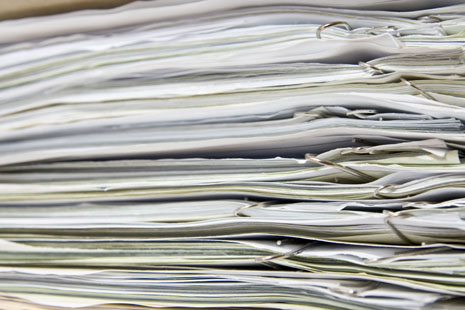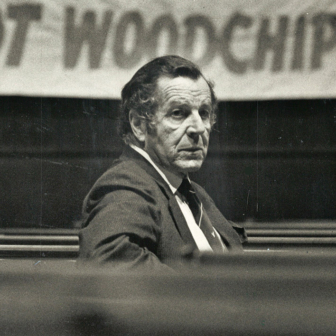IN DECEMBER 1947 William Penhall, the last Chief Protector of Aborigines in South Australia, decided that the children of an Aboriginal mother at Point Pearce Station should be taken in hand by the Children’s Welfare Department and made wards of state. “Do not mention this to anyone at present,” he advised the manager of the station. “When the necessary arrangements are made, the children will be removed without notice or warning.”
The Children’s Welfare Board – which had final say over removals – disagreed, calling for more information and efforts to resolve the problem by other means. But Penhall went ahead anyway. He recommended to his Aborigines Protection Board that the children be removed from their mother and held in the Umeewarra Children’s Home, a mission run by the Plymouth Brethren in Port Augusta. Although Penhall’s board didn’t have the legal authority to remove a child from its parents on welfare grounds, his recommendation was accepted and the children were removed.
Their mother appealed to Penhall for permission to keep her youngest daughter with her until she turned six. “I am not asking you much,” she wrote “I no [sic] I have done sin, but I kept myself straight for nearly 6 years now. I will be quite lonely if you put the three [children] in.”
ALTHOUGH it is common knowledge that many Aboriginal children were taken from their parents across Australia during the twentieth century, until now no one has been able to provide evidence of any government – territory, state or federal – removing children illegally. Carrying out research for my book The Last Protector (published this month by Wakefield Press), I found evidence of repeated illegal actions. The book examines the practices of the Aborigines Department in South Australia under Penhall, who was Chief Protector of Aborigines from 1939 to 1953. Over that period his department removed or withheld numerous Aboriginal children from their parents, and did so in a manner contrary to the legislation in effect at the time.
As I’ve researched Penhall’s story over the past seven or eight years there have been times when it seemed that my account would be stifled. A series of directives given to me by the South Australian attorney-general, Michael Atkinson, can only be explained as an attempt to conceal government wrong-doing.
That story begins in November 2001, when I was given permission by the Department of Aboriginal Affairs and Reconciliation to view GRG 52/1, the correspondence files of the Aborigines Department. This series is the most valuable archival resource relating to the Aboriginal people of South Australia.
Over the next few years I spent many long days in the public reading room of State Records of South Australia, reverently opening up box after box of dusty, fragile letters and reports, unpacking and reading them from cover to cover. As I read I noticed patterns. Most interestingly, there appeared to be discrepancies between the legal instruments available to the Aborigines Department and their actual practices, especially in relation to the guardianship of Aboriginal children: a cryptic letter from the crown solicitor; a letter from Penhall to a concerned citizen in which he denied his department was doing anything wrong; a comment here; an unsigned note there. Slowly I became aware that there was a very important story scattered throughout these documents, waiting for someone to piece it together.
By 2003, I had the makings of The Last Protector. It would centre on the administration of the department by William Penhall between 1939 and 1953. The central topic would be the illegal removal of Aboriginal children from their parents.
It soon became clear that several pieces of the historical jigsaw were missing. There was no “smoking gun,” no unequivocal admission by Penhall or the crown solicitor that the department had overstepped its authority. But I had heard of the existence of certain files in the possession of the Crown Solicitor’s Office. I suspected that the information in these files went to the heart of the question of whether the department had acted illegally in the 1940s and 1950s.
On the advice of State Records, I rang the Crown Solicitor’s Office. I was told that because the files could contain the legal opinion of the crown solicitor, they would not be made available to me. It appears that the office was mindful of the Bruce Trevorrow case, the landmark South Australian action for compensation by a member of the stolen generations. Clearly, they did not want anyone to access material that could shed light on the question of whether Trevorrow had been removed from his family illegally. It did not matter that the legal opinion dated back to the 1940s. The office suggested I write to the attorney-general.
In December 2003 I did this. I was duly informed that the matter I raised was the responsibility of Department of Aboriginal Affairs and Reconciliation and its minister. I pointed out to the attorney-general that the files, though the property of the department, were in the possession of the crown solicitor, and it was he, not the department, who was denying access. On 2 February 2004, I was informed by the attorney-general that the matter I had raised was “receiving attention.”
Finally, on 4 April 2004, Mr Atkinson advised me that the files in question attracted “legal professional privilege” and I would therefore not be able to view them. His letter ended: “I have written to DAAR [the department] and asked it to withdraw your authorisation to access files from GRG 52/1 until that series of documents has been checked.”
I was astounded. Not only was I being denied a viewing of these “secret” files, my access to the whole of the correspondence of the Aborigines Department, all 170 boxes of it, was being revoked.
I decided to test this. A little while later I requested of the Crown Solicitor’s Office access to three other files from GRG 52/1 in their possession. One contained correspondence between Penhall and the Assemblies of God Church; another concerned Aboriginal deaths at Ernabella Mission; another included a flier for a meeting of the Aboriginal Advancement League in Adelaide. I had previously read each of these files and was reasonably confident that none of them contained advice from the crown solicitor – nothing that could be subject to legal professional privilege. A week after I made this request, an officer concerned informed me that she had forgotten my request. She assured me that she would get onto it as soon as possible.
Two weeks later I rang again. The officer advised me that she had done nothing because my permission to view GRG 52/1 had been withdrawn. It was official: Michael Atkinson had delivered on his promise and had me effectively banned from accessing GRG 52/1.
I was informed by an officer at the department that every time I wanted to look at anything from GRG 52/1 it would have to be retrieved from State Records – staff resources permitting – and examined for the presence of material subject to legal professional privilege. That officer would then report back to the CEO of the Department of Aboriginal Affairs and Reconciliation, who would inform the Crown Solicitor’s Office, who would then inform the attorney-general. A convoluted process of approval or disapproval would commence. I requested a clear outline of this new access regime, in writing. I am still waiting.
This new regime was then extended to all members of the South Australian public. It is still in place in February 2009.
Clearly, the South Australian government is worried about the possibility of claims for compensation by members of the stolen generations following the landmark Trevorrow test case. In 2007, in South Australia’s Supreme Court, Justice Thomas Gray found that Bruce Trevorrow had been illegally removed from his parents in 1957. He also found that the effect it had on his life was profound. Bruce died in June 2008, just months after he was awarded $525,000 for injuries, losses and false imprisonment.
In February 2008, the government decided to appeal certain points of law in the case, so as to “clarify the law.” The appeal is pending. Meanwhile, it is no longer possible for any historian, Aboriginal or non-Aboriginal, to embark on a process of discovery using the correspondence files of the Aborigines Department. This goes directly against the findings of the Bringing Them Home inquiry in the mid 1990s, several of which related to the importance of allowing Aboriginal people and others access to government archives.
The Last Protector shows how William Penhall exerted autocratic control over Aboriginal people through bluff and threat. It uncovers his department’s carefully cultivated secrecy, which prevented most South Australians knowing of the oppressive regime under which Aboriginal people lived. It makes tangible the culture of negativity which festered under Penhall. The Aborigines Department deliberately and systematically misled Aboriginal people in South Australia regarding their rights as parents.
Is it possible that the people specifically charged with the protection and development of Aboriginal people could have been part of such a program? Consider the words of A.P. Elkin, one of the founders of Australian anthropology. In the last essay he wrote, fifty years after the events in question, Elkin finally felt able to speak of his fieldwork experiences of the late 1920s in north-western Australia:
The generally accepted principle was that Aborigines had to be kept in their place. Even a government officer, a Protector of Aborigines, who had contributed to the costs arising from a punitive expedition in 1926, explained that Aborigines had to be given a lesson from time to time. Apparently it was only incidental that this particular lesson involved killing and burning the bodies of 20 or more Aborigines in “revenge” for the fatal spearing of one European …It was only a minor incident when this same Protector kicked and cursed a young Aboriginal stockman for asking for a shirt and a pair of trousers to replace those he had passed to his “uncle”…
The Last Protector shows how this “generally accepted principle” played out relentlessly in the mid twentieth century among the ranks of the government and the public service in South Australia. From the actions of the South Australian government lately, it appears that the culture of kicking and cursing is still alive. •




